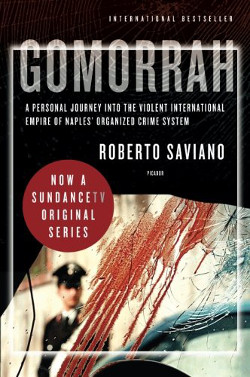 Gomorrah (Picador Press) is Roberto Saviano’s bestselling account of the Camorra’s audacious corruption of Naples and beyond in the 1990s and 2000s.
Gomorrah (Picador Press) is Roberto Saviano’s bestselling account of the Camorra’s audacious corruption of Naples and beyond in the 1990s and 2000s.
In December 1991, Giuseppe (Don Peppino) Diana, the doomed parish priest of the Neapolitan suburb of Casal di Principe, published an open letter to his parishioners called “For the Love of My People I Will Not Stay Silent.”
The Camorra today is a form of terrorism that arouses fear and imposes its own laws in an attempt to become an endemic element of Campania society. Weapons in hand, the Camorristi violently impose unacceptable rules: extortions that have turned our region into subsidized areas with no potential on their own for development; bribes of 20 percent or more on construction projects, which would discourage the most reckless businessman; illicit traffic in narcotics, whose use creates gangs of marginalized youngsters and unskilled workers at the beck and call of criminal organizations… veritable laboratories of violence and organized crime.
Don Peppino’s outspokenness eventually killed him in 1994. As in “Eleanor Rigby,” no one was saved.
The Camorra—Naples’ own mafia, far less known than the Cosa Nostra but reputedly more deadly and insidious—is the subject of Gomorrah, Roberto Saviano’s 2006 cri de cœur that became a blockbuster bestseller in Italy, which then spawned a movie and the highest-rated series on Italian TV (recently aired on the Sundance Channel).
See also: Crime Under the Volcano: Introducing Gomorrah
Unlike the Sicilian Cosa Nostra or the Calabrian ‘Ndrangheta, family ties are useful but not necessary in the Camorra. Above all, the Camorra is entrepreneurial; its business is business, and each clan is essentially an incubator, generating little bosses who can become big bosses with enough drive and business acumen. Clans spin off subsidiaries and franchises, conduct mergers and friendly (or hostile) takeovers, and establish joint ventures. Other than taking the phrase “cutthroat business” literally, its exploits read like Business Week as filtered through Mario Puzo.
And what is its business? Everything. Literally. Unlike the Cosa Nostra, which tries to be the anti-state, the Camorra will work with the state if there’s a profit to be made. Unlike the rigid, hidebound structures of the other Italian mafias, the Camorra is a wonder of flexibility, fast-track career paths, and the startup mentality. Instead of being hidden away behind closed doors, Camorra women take an active role in the clan enterprise, often running the businesses, sometimes rising to capo or even becoming soldiers.
A business needs talent, no? The Camorra is also fully globalized, with branch offices in Peru and Colombia, retail chains in Miami and Singapore, strategic partnerships with corrupt soldiers and politicians in the Balkans. It outsources non-core processes to the legions of the unemployed, and otherwise unemployable, warehoused in the grimy tenements on the outskirts of Naples. Theirs is the kind of puritan capitalism beloved of market fundamentalists around the world, Ayn Rand’s philosophy put into practice at the point of an AK-47.
Gomorrah is billed as “a personal journey.” As a native Neapolitan who grew up under the shadow of the Camorra, the whole subject is personal to Saviano. He did some great amount of his research by simply hanging around, talking to Camorristi, unloading shipments of Chinese athletic shoes from freighters still at sea, attending Camorra parties, funerals, and weddings.
Which is both a blessing and a curse. This isn’t a history book; dates are the exception, not the rule, and there’s no clear timeline or even an attempt to present one. It’s a true-crime (or true-business) exposé written by an abstract impressionist. Saviano rarely fails to use ten words where one will do; sometimes this leads to something like poetry, while other times it leaves you thinking, “Wait, what?” If characters have multiple names and nicknames, Saviano uses them all interchangeably.
Gomorrah also was clearly meant for an Italian audience, not an international one. The inside references, lists of place names, and sotto voce asides are probably totally transparent to a Roman or Florentine (and certainly to a Neapolitan), but not to anyone not carrying an Italian passport.
Ultimately, there is no hope or cure expressed in Gomorrah. Things are what they are, and few have the stomach or death wish to try to change them. Even Cipriano, a childhood friend of Don Peppino’s who wrote the jeremiad from which this article took its title, “closed up”—shut himself away from everyone and everything, overwhelmed by grief and hopelessness.
The Camorra is eternal, omnipresent, omnipotent, godlike. Too many people are compromised or complicit or simply too damn afraid. “There is always another abyss in the abyss,” Saviano writes. “I can’t help but notice. Because I know… I know how much of the blood of others is in each pillar.”
To learn more or order a copy, visit:
opens in a new window![]() opens in a new window
opens in a new window![]()
Lance Charnes is an emergency manager and former Air Force intelligence officer. The characters in his international thriller Doha 12 and his upcoming art-crime novel The Collection pass through much nicer parts of Italy, while his near-future thriller South is set in Gomorrah’s level of grunge. His Facebook author page features spies, shipwrecks, art crime and archaeology, among other things.

She added: “Many of our former pupils who were his contemporaries talk of a quiet and talented student who blossomed at school, especially after an exchange trip to Australia. We wish him every success in his reign.”